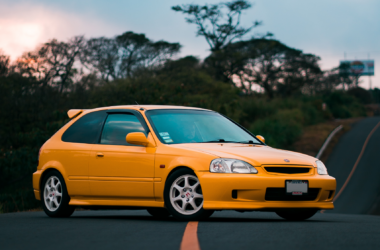Lowriding isn’t merely the customization and modification of cars, it’s a cultural declaration and art form symbolizing Chicano identity. In parts of East Los Angeles, lowriders cruise the streets, reflecting the sun in their finely polished paint jobs, hydraulics pumping to old-school funk. What started as a subversive movement morphed into a global symbol of resilience and creativity.
The History of Lowriding
Started post-World War II, when Mexican-American veterans began customizing their cars to express themselves. Inspired by American car culture and Mexican roots, they dropped classic cars — the Chevy Impala, for example — to a low, slow-cruise stance. The message came loud and clear: “We don’t race, we roll.”
By the 1950s and 1960s, lowriding was a central component of Chicano culture. Car clubs like the Imperials and Dukes formed, offering brotherhood and artistic innovation. But the mainstream saw lowriders as troublemakers, leading to laws banning excessively lowered cars. In response, the community developed hydraulic systems—initially a workaround, now a signature element of lowrider culture. Cars didn’t just drive; they hopped and danced in defiant celebration.
The Beauty of Lowriders
A lowrider isn’t just a car—it’s a rolling masterpiece. The first thing you notice is the paint—candy-colored hues, and intricate murals depicting family, faith, and Chicano history. Many cars feature airbrushed tributes to the Virgin Mary, Aztec warriors, or fallen loved ones, transforming vehicles into moving altars.
Hydraulics elevate lowriders into performance art. Some leap several feet, others glide in slow, wave-like motions. Interiors are just as meticulous—plush velvet seats, custom embroidery, polished chrome. Even the sound systems turn streets into concert halls, blasting funk, soul, and Chicano rap. Every detail is intentional, reflecting the owner’s identity and artistry.
Cultural Significance
Lowriding ain’t just about the cars, it’s about the heritage, the family, the story. It begins in garages, where generations work together to bond over paint and engines. A lowrider bears the fingerprints of the people who created it, buffed it, and took it out for Sunday drives.
Lowriders are about music, and music goes with lowriders. Songs such as War’s “Lowrider” and Kid Frost’s “La Raza” became cultural anthems, while films such as Blood In, and Blood Out solidified them in pop culture. But lowriding is more than style — it has been an act of nonviolent defiance. Even when cruising was banned, the community continued, showing that lowriding is about pride, not trouble. Cities such as Los Angeles and San Jose have since rescinded cruise bans, acknowledging that lowriding is a cultural heritage, not a nuisance.
Tour a lowrider show, and there are grandmothers complimenting their grandsons’ builds, children virtually gobsmacked to sit in a ‘64 Impala for the first time, veterans remembering their first ride. It’s a celebration of identity in a world that too often attempts to erase it.
Conclusion
Lowriding is an art, a lifestyle, and a statement. Whether bouncing down Whittier Boulevard or cruising the streets of Tokyo—yes, even Japan has embraced the culture—it continues to grow and inspire. To understand lowriding, you have to experience it first. It’s not just about the cars, it’s about the people, the stories, and the legacy. And as long as there are roads to cruise, lowriding will keep rolling strong.









